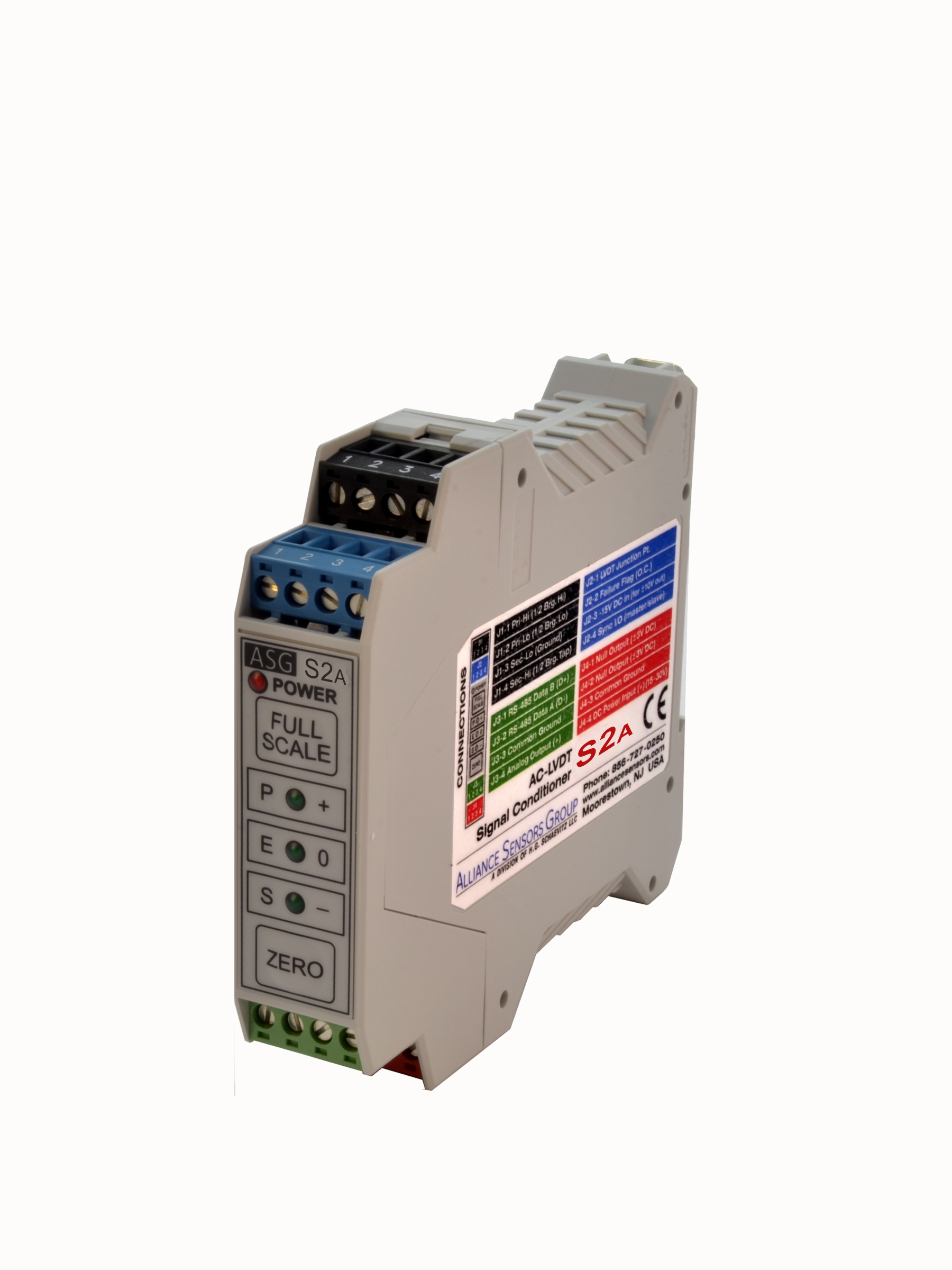
Alliance Sensors Group launches S2A LVDT signal conditioner
November 14, 2018
By Manufacturing AUTOMATION

November 14, 2018 – Alliance Sensors Group has introduced the S2A, its latest LVDT signal conditioner.
This LVDT signal conditioner offers a LVDT/RVDT setup and has been engineered to work with a wide range of LVDTs, RVDTs and inductive half-bridge sensors including three-wire GE LVRTs and GE gas turbine buck-boost style LVDTs.
The signal conditioning module has cybersecurity tamper prevention and notification features that no other manufacturers have even considered, providing confidence that the unit has not been compromised.
The S2A offers push button calibration, reducing set-up time by a factor of 10. In the past, AC-operated LVDT linear and rotary position sensors could be difficult to calibrate because traditional signal conditioners required operators to adjust trimmer pots. With an S2A signal conditioner, the internal microprocessor eliminates any need to calculate jumper connections for gain, range, etc. The operator simply finds null, then moves the LVDT core to one end of the range and presses the front panel zero button.
Once set, the LVDT’s core is moved to the other end of the specified range and the front panel full scale button is pressed. The S2A is then fully calibrated with the position sensor.
The new S2A DIN-rail-mounted module can be “hot swapped” into an existing installation, with original calibration data saved and then reloaded into a new module via its RS-485 port. Conventional signal conditioners would require a full calibration. The S2A also can be set up remotely using a computer connected through the digital communications link to the RS-485 bus, which simplifies operations if the module is already installed on a DIN rail in a cabinet.
For installations involving multiple position sensors, the S2As can be master/slaved to prevent cross talk between sensor signals. Should a master fail, conventional signal conditioners will revert to their own oscillators, opening them to cross talk the master/slave configuration was to prevent. If the master S2A fails, the first slave becomes a new master for all the other slaves.
Advertisement
- J.M. Lahman Manufacturing Inc. fined $150K after child killed at factory
- Festo debuts suite of new products at Rockwell Automation event